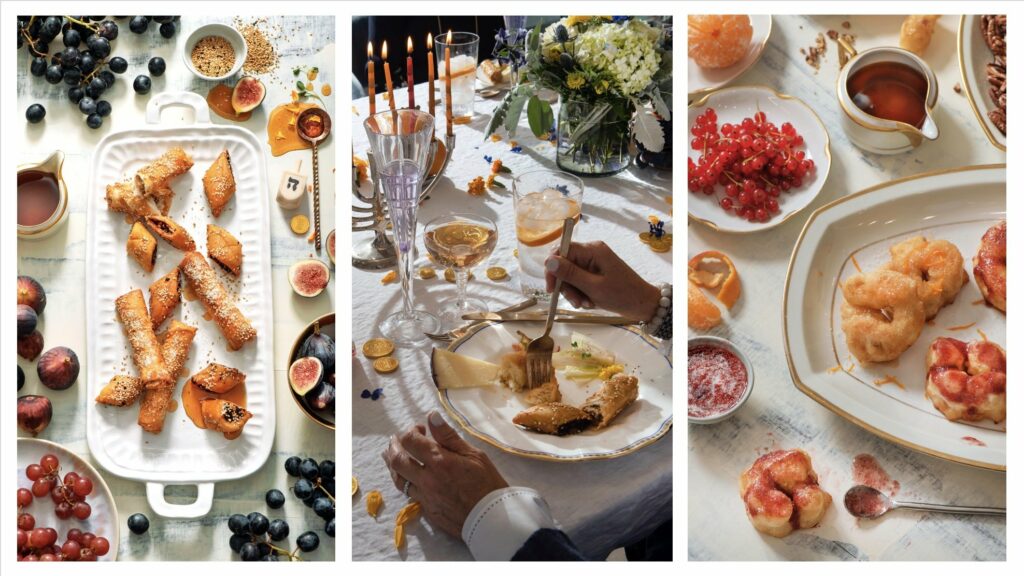Aglow in a room full of friends, family, and food, the eight candles of Hanukkah glimmer with the cozy warmth that only a holiday can bring. Chatter floats around the smells of maqrūt, tortillas de acelga, sweet fried eggplant, nebulas encanonadas, and ifseng, each one an authentic Sephardic recipe taken from the pages of Sephardi: Cooking the History by Hélène Jawhara Piñer.
Hélène’s cookbook, though traditional and authentic, does not sing songs of personal family stories. Instead, it delves deep into Jewish history to illuminate dishes that were once prepared in times fraught with anti-Semitism: food was a way to reveal and preserve Jewish identity.
The recipes shared by Hélène with TABLE readers link back, through frying, to the miracle of the oil that kept a menorah in Jerusalem aflame for eight days almost 2200 years ago. These traditional foods spread around the Mediterranean when Sephardic people were forced to be pushed out of their homes in Iberia in the 15th century. Jews who chose expulsion over conversion to Catholicism moved to Portugal, Southern France, Italy, Morocco, and Ottoman Turkey.
This movement left its mark on food traditions. Tortitas de acelga, chickpea flour croquettes with Swiss chard, speak with the flavors of Spanish Sephardic cuisine. Maqrut, a sweet dessert with dates and walnuts, is tied to the foods of Morocco, while ifseng, a fried pastry common during Hanukkah, has roots in Morocco and Israel.
While expressing Hanukkah’s love and light, these recipes also call for reflection on how traditions survive and adapt to times of strife and difficulty. Each recipe ties to a piece of the past, encouraging us to engage in “cooking the history.” Each bite, to Hélène, becomes a little sweeter, more intense, and flavorsome with a deeper connection to the past. She writes in her beautifully researched cookbook that “to eat is to remember.”

A magical Hanukkah dinner. At center, a Hanukkah 75 cocktail.

The buffet-style feast included a fresh endive salad garnished with marigolds and herbs, as well as Tortitas de Acela and Sweet Fried Eggplant from Sephardi, Hélène Jawhara Piñer’s cookbook.

Hanukkah would not be complete without sweets! At left, Makrùt and at far right, Nebulas Encanonadas, recipes from Sephardi, Hélène Jawhara Piñer’s cookbook.
Cook with Hélène Jawhara Piñer:
And a special Hanukkah 75 cocktail from TABLE Magazine!
Sephardi: Cooking the History can be purchased through your favorite bookstore or online.
Story by Maggie Weaver / Photography by Scott Goldsmith/ Styling by Keith Recker / Food by Veda Sankaran and Cécile Desandre-Navarre
Subscribe to TABLE Magazine’s print edition.
